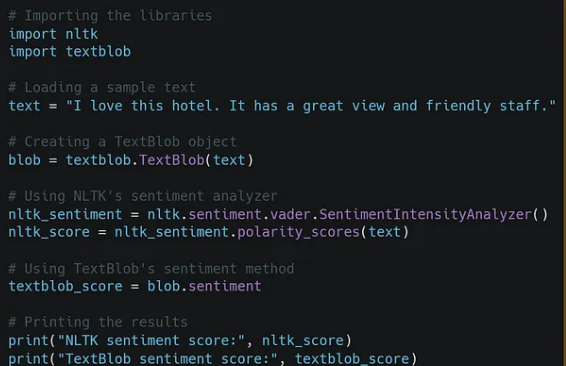Introduction
Did you know that due to the rising need for understanding customer feedback and intent, the market size for sentiment analysis is estimated to grow by $6.4 billion by 2025? With understanding data being the key to ensuring success, it is essential for companies to analyze customer reviews, social media posts, or news articles, sentiment analysis will offer an in-depth understanding of the market dynamics. This can be achieved through a basic sentiment analysis of text using Python.

Some experts may ask “Are there more ways to make the most of technology and data to enhance business processes?” Yes, sentiment analysis is the way to go. In the current world, automation is the key to establishing a stellar strategy to tackle challenging scenarios in your business. Here is a brief on sentiment analysis Python tutorial.
What is Sentiment analysis in Python?
Sentiment analysis helps in tagging data according to their sentiment, positive, negative, or neutral. It helps you analyze data at a large scale, detect insights, and automate processes wherever required. Performing sentiment analysis with NLTK (Natural Language Toolkit) is a sure-shot way to preprocess vast text or data and convert it into a bag of words model. Machine learning and natural language processing algorithms help in analyzing text and extracting the key sentiment. There are other options apart from NLTK.
Did you know that Python provides many libraries like VADER and TextBlob in analyzing text and extracting the sentiment? Sentiment analysis Python or TextBlob for sentiment analysis will help you identify areas which have the potential to be automated and save a lot of time, ensuring efficient resource allocation.
- ● Detailed crystal-clear documentation
- ● Easy to adopt regardless of which industry
- ● Sample data and demos
- ● Access to lexical and corpora resources
- ● Larger text processing library
- ● Different interfaces for machine learning
- ● Prototyping and coding simplified
Sentiment Analysis with NLTK vs TextBlob
NLTK and TextBlob are two popular libraries that offer a range of tools and functionalities for working with textual data like tokenization, sentiment analysis, and tagging parts of speech. The reason why NLTK is widely used is due to its friendly graphical interface that allows you to explore different aspects of NLP and provides a rich set of tools and resources for working with text data such as tokenizers, stemmers, parsers, classifiers, and corpora. Here’s a snippet of NLTK code for your reference.

TextBlob is almost the same as NLTK but has a slightly different output in their compound scores. The NLTK library gives a higher compound score of 0.8316 whereas TextBlob gives a polarity score of 0.55.
- ● Detailed crystal-clear documentation
- ● Easy to adopt regardless of which industry
- ● Sample data and demos
- ● Access to lexical and corpora resources
- ● Larger text processing library
- ● Different interfaces for machine learning
- ● Prototyping and coding simplified
A Brief Look Into VADER
As a developer, you can perform sentiment analysis using a vocabulary with VADER, Valence Aware Dictionary and Sentiment Reasoner. This is widely used in analyzing sentiment in social media text and works using a vocabulary of words which are labelled as either positive or negative. During text analysis, VADER looks for the sentiment words that are present and applies rules for sentiment in social media text. It uses a vocabulary of words that are manually labelled as either positive or negative. The key behind VADER is that it analyses the text by checking which sentiment words are present and applies rules around sentiment intensity and grammar. It is useful for informal social media language and effective for large volumes of text.
- ● Sentiment Lexicon
- ● Optimized for social media
- ● Sentiment heuristics
- ● POS/Neg proportions
- ● Normalized scores
- ● Fast and efficient
How to Use Scikit-learn for Machine Learning Sentiment Analysis?
The best way to perform sentiment analysis using Python and Scikit-learn is to use Scikit-learn by leveraging its text analysis tools and machine learning algorithms. This involves data preparation, converting text into numerical features, training a model, and making suitable predictions.
The Key is to Choose the Right Python Sentiment Analysis Library
If you are efficient in performing sentiment analysis, you will be the most sought-after candidate for businesses depending on social media. Python sentiment analysis libraries have an AI-driven sentiment analyzer with which NLP sentiment analysis can impact the effectiveness, accuracy, and overall success. Becoming an expert on sentiment analysis can be quite challenging with some code to learn and familiarize yourself with key indexes. You can learn sentiment analysis Python with Eduinx.

At Eduinx, our mentors have over ten years of experience in Python, sentiment analysis, data science, and product management. You can learn what is relevant to your industry through our non-academician mentors who are here to guide you through the learning process. Our mentors help you perform capstone projects, and learn the core aspects of managing Python through a holistic and interactive manner. You can stand out from the competition and become an indispensable resource through our course.




